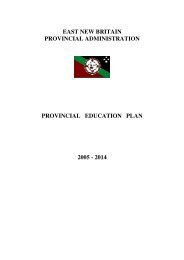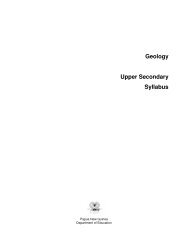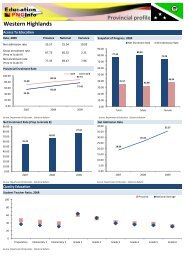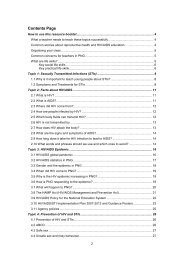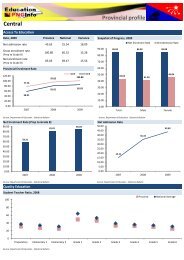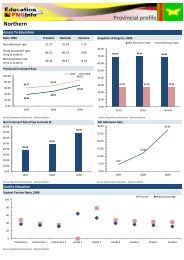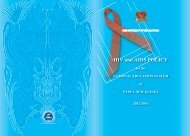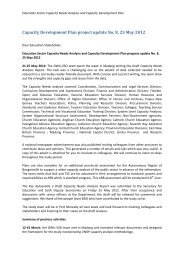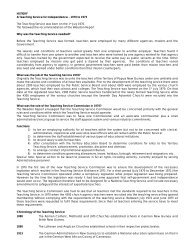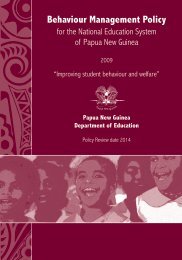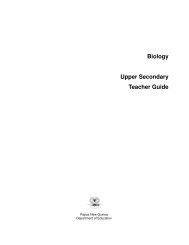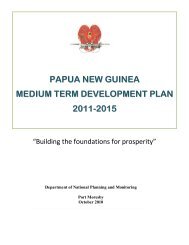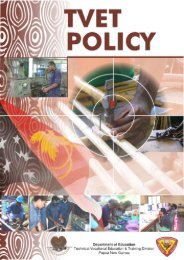Physical Education - Department of Education
Physical Education - Department of Education
Physical Education - Department of Education
Create successful ePaper yourself
Turn your PDF publications into a flip-book with our unique Google optimized e-Paper software.
<strong>Physical</strong> education<br />
2. Whole language approach<br />
Within the integrated, thematic approach, the whole language approach will<br />
guide planning and teaching <strong>of</strong> the vernacular and English programs.<br />
Teachers must create a rich environment with models <strong>of</strong> a variety <strong>of</strong> oral and<br />
written text types in the classroom. This helps students learn how whole<br />
texts are constructed. Many student-centred activities can also be created<br />
from whole texts for students to learn about the parts <strong>of</strong> language such as<br />
letter– sound relationships, pronunciation, spelling, grammar and vocabulary.<br />
3. Program separately for vernacular and English<br />
Language development in vernacular and English needs to be planned<br />
separately for each subject. Students use vernacular, for example, when<br />
they are learning difficult new content and content that is related to their own<br />
community lives, or for small group discussions. Students are introduced to<br />
English words and language features while they are learning the concepts in<br />
vernacular. Gradually, as students’ vocabulary and understanding <strong>of</strong> English<br />
grows, they will learn more and more in English. In Grade 5 seventy percent<br />
<strong>of</strong> teaching, learning and assessment will be in English.<br />
4. Use big books for both languages<br />
Big books should be used as a main resource for both vernacular and<br />
English language development. Big books are usually used to introduce a<br />
new topic, new ideas, a new text type, new grammar and new vocabulary.<br />
Big books can be either fiction or information texts. You can make bilingual<br />
big books showing the same information or telling the same story in both<br />
vernacular and English.<br />
5. Variety <strong>of</strong> genres<br />
There will be a focus on different text types, or genres, associated with<br />
different language functions or purposes. These genres help students to<br />
understand how language can be used in powerful and interesting ways for<br />
different purposes. For example, we tell, read and write narratives to share<br />
experiences for enjoyment. We use procedures to explain how to make<br />
something or do something. We use reports to present factual information<br />
and explanations to explain why certain things happen. Arguments are used<br />
to present different points <strong>of</strong> view in powerful, persuasive ways. The<br />
following genres will be taught and practised in different subjects at Lower<br />
Primary:<br />
• narrative<br />
• recount<br />
• procedure<br />
• report<br />
• explanation<br />
• exposition.<br />
7



